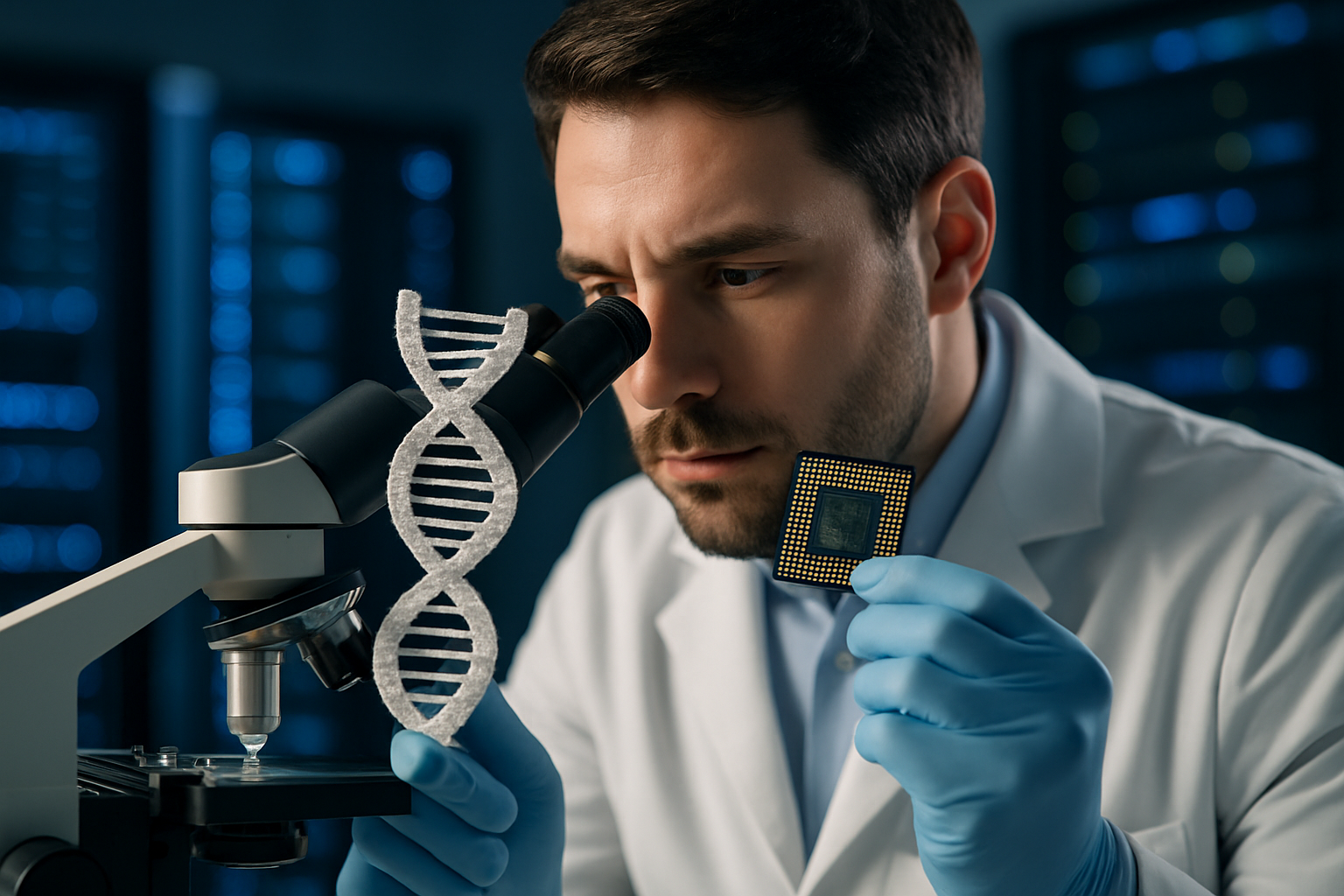DNA Digital Data Storage: Computing's Next Frontier
The unassuming double helix that carries our genetic code might soon become the backbone of tomorrow's data centers. Scientists are rapidly advancing the field of DNA data storage, which promises to revolutionize how we preserve our digital legacy. Unlike conventional storage media that degrade within decades, DNA could safely harbor our data for millennia. This biological approach to data retention isn't just durable—it's incredibly dense, potentially storing all the world's digital information in a space smaller than a standard kitchen cabinet. As our global data needs explode, this ancient molecule might ironically become our most cutting-edge solution.

The data apocalypse looming on our horizon
Our digital world has a storage problem of epic proportions. Currently, humanity produces approximately 2.5 quintillion bytes of data daily—a number so vast it defies comprehension. Traditional storage technologies like magnetic tape, hard drives, and solid-state memory are struggling to keep pace with this deluge while facing fundamental physical limitations.
Silicon-based storage technologies are approaching their practical density limits. Meanwhile, the environmental footprint of massive data centers continues to grow, with cooling requirements and energy consumption becoming increasingly problematic. Even more concerning, most current storage media degrade within decades. Magnetic tape, considered among the most stable conventional options, typically lasts just 30 years before data corruption becomes inevitable.
These compounding issues have created an urgent need for alternatives, leading researchers toward an unexpected solution hiding in our own cells.
Why DNA makes perfect storage sense
The elegance of DNA as a storage medium becomes apparent when examining its fundamental characteristics. DNA’s four-letter nucleotide code—adenine, thymine, guanine, and cytosine—can be repurposed to represent the binary language of computers. This biological molecule has evolved over billions of years specifically to store information with remarkable fidelity.
The density advantages are staggering. According to research published in Science, a single gram of DNA could theoretically store 215 petabytes (215 million gigabytes) of data. To put that in perspective, you could store all the world’s digital data—currently estimated at around 44 zettabytes—in DNA that would fit inside a couple of pickup trucks.
Perhaps most impressive is DNA’s longevity. Archaeological discoveries have retrieved readable DNA from specimens over 700,000 years old. When properly preserved in cold, dry conditions, DNA could potentially store information for millions of years, making it the closest thing we have to eternal digital memory.
The technical hurdles that remain
Despite its promise, DNA storage faces significant challenges before mainstream adoption becomes feasible. The most prohibitive factor remains cost—currently, synthesizing and sequencing DNA for data storage purposes costs thousands of times more than conventional storage methods.
The write speed presents another major bottleneck. With current technology, encoding data into synthetic DNA remains painfully slow, taking hours or days to store what a computer could write to a hard drive in seconds. Scientists are working on parallelization techniques and enzymatic approaches that could dramatically accelerate this process, but these solutions remain experimental.
Random access—the ability to retrieve specific pieces of data without reading through everything—has also been problematic. Recent innovations involving PCR primers as addressable markers have shown promise, but more work is needed to make this process efficient and reliable.
Error correction represents the final major challenge. While DNA is remarkably stable, it isn’t perfect. Natural degradation and synthesis errors can corrupt data, necessitating sophisticated error-correction algorithms specifically designed for DNA’s unique error profiles.
Early commercial efforts gaining momentum
Despite the technical obstacles, several companies and research institutions are pushing the boundaries of this technology. Microsoft has been particularly active, collaborating with the University of Washington on Project Paoli, which successfully stored and retrieved 200 megabytes of data in DNA. The tech giant envisions DNA storage as a solution for long-term archival needs.
Startup Catalog, founded by MIT scientists, has developed a proprietary method that drastically reduces synthesis costs by encoding data in DNA molecules in bulk rather than base by base. In 2019, they successfully stored all 16 gigabytes of Wikipedia’s English-language text in DNA.
Another promising player is Twist Bioscience, which specializes in high-throughput DNA synthesis. They’ve partnered with Microsoft and the University of Washington to advance practical DNA storage solutions, focusing particularly on improving write speeds and reducing costs.
Industry analysts project the DNA data storage market could reach $2-3 billion by 2030, though this estimate varies widely depending on how quickly technical hurdles are overcome.
The future data landscape with DNA storage
As DNA storage technology matures, its impact will likely be felt first in archival applications where data longevity trumps access speed. National archives, scientific repositories, and cultural institutions could preserve their digital heritage for millennia rather than decades.
The technology could also transform how we think about data security and preservation. Unlike electronic systems vulnerable to electromagnetic pulses or physical damage, DNA storage could provide unprecedented resilience against both natural disasters and deliberate attacks.
Environmental benefits might prove substantial as well. Once the initial energy-intensive synthesis is complete, DNA storage requires no electricity to maintain data integrity—just a cool, dry environment. This stands in stark contrast to power-hungry data centers that currently consume approximately 1-2% of global electricity.
Privacy advocates are also watching this technology closely. The biological nature of DNA storage raises complex questions about biometric information and the potential blurring of biological and digital data. These ethical dimensions will require careful consideration as the technology advances.
While we won’t be storing our smartphone photos in DNA anytime soon, this ancient molecule may well become the foundation for humanity’s long-term digital memory—a fascinating convergence of biology and technology that bridges billions of years of evolution with our digital future.





